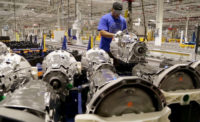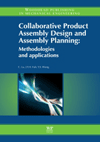Artificial Intelligence Helps Streamline Assembly

CAMBRIDGE, MA—Engineers at the Massachusetts Institute of Technology (MIT) have developed a new algorithm that can be applied to a wide range of complex real-world assemblies. It can be used to help eliminate the need to manually design assembly plans and instructions before sending parts to assembly lines.
Working in conjunction with Autodesk Research and Texas A&M University, MIT’s Computer Science and Artificial Intelligence Laboratory (CSAIL) came up with a method to automatically assemble products. Their algorithm efficiently determines the order for multipart assembly, and then searches for a physically realistic motion path for each step.
“Instead of one assembly line specifically designed for one specific product, if we can automatically figure out ways to sequence and move, we can use a fully adaptive setup,” says Yunsheng Tian, a Ph.D. student at MIT who worked on the project. “Maybe one assembly line can be used for tons of different products. We think of this as low-volume, high-mix assembly, opposed to traditional high-volume, low-mix assembly, which is very specific to a certain product.”
Given the objective of assembling a screw attached to a rod, for example, the algorithm would find the assembly strategy through two stages: disassembly and assembly. The disassembly planning algorithm searches for a collision-free path to disassemble the screw from the rod. Using physics-based simulation, the algorithm applies different forces to the screw and observes the movement.
As a result, a torque rotating along the rod’s central axis moves the screw to the end of the rod, then a straight force pointing away from the rod separates the screw and the rod. In the assembly stage, the algorithm reverses the disassembly path to get an assembly solution from individual parts.
According to Tian, everything is typically hard-coded in assembly plants today. If you want to produce a given product, you have to precisely control or program instructions to assemble or disassemble a product. Which part should be assembled first? Which part should be assembled next? And how are you going to assemble this?
Previous attempts have been mostly limited to simple assembly paths, like a very straight translation of parts. To move beyond this, the engineers used a physics-based simulator—a tool commonly used to train robots and self-driving cars—to guide the search for assembly paths, which makes things much easier and more generalizable.
“Let’s say you want to disassemble a washer from the shaft, which is very tightly and geometrically assembled,” explains Tian. “The status quo would simply try to sample a bunch of different ways to separate them, and it’s very possible you can’t create a simple path that’s perfectly collision-free.
“Using physics, you don’t have this limitation,” Tian points out. “You can try, for example, adding a simple downward force, and the simulator will find the correct motion to disassemble the washer from the shaft.”
However, although the system handled hard, rigid objects with ease, future work needs to be done on applications that involve soft, deformable assemblies. Another long-term goal of Tian’s is to make an assembly line that can adaptively assemble everything without humans.
“Assembly is a longstanding challenge in the robotics, manufacturing and graphics communities,” adds Yashraj Narang, senior robotics research scientist at Nvidia Corp. “This work is an important step forward in simulating mechanical assemblies and solving assembly planning problems.
“It proposes a method that is a clever combination of solving the computationally-simpler disassembly problem, using force-based actions in a custom simulator for contact-rich physics, and using a progressively-deepening search algorithm,” says Narang. “Impressively, the method can discover an assembly plan for a 50-part engine in a few minutes.”
Looking for a reprint of this article?
From high-res PDFs to custom plaques, order your copy today!






